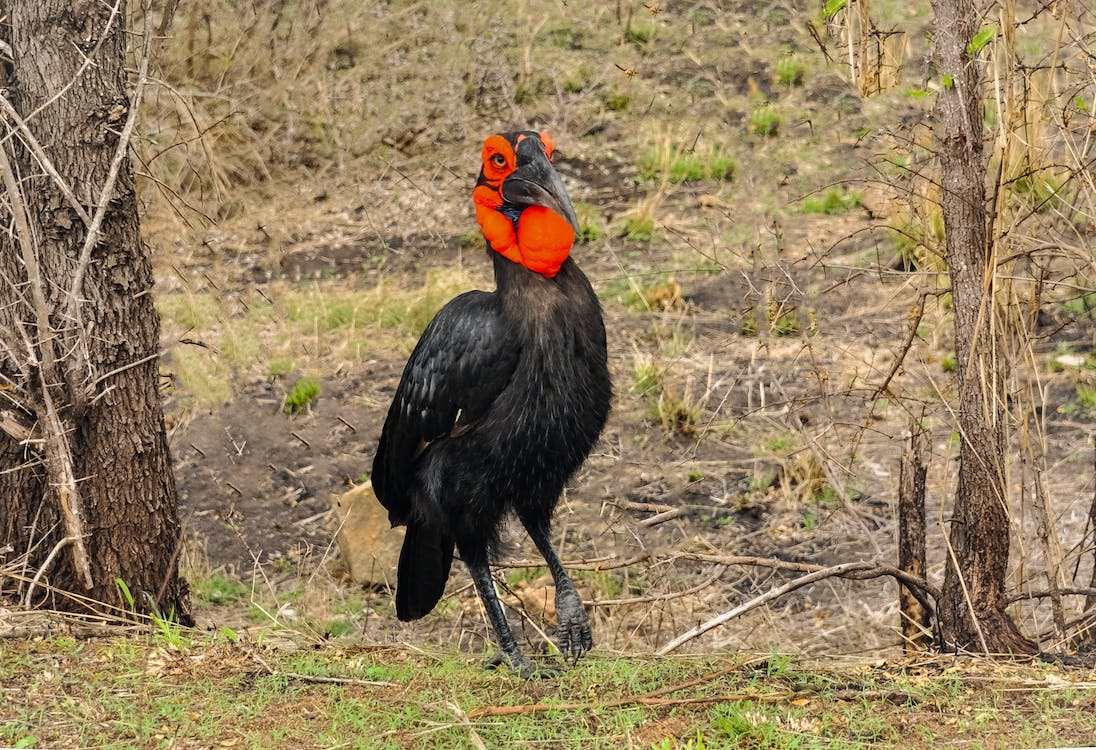It is a black-and-white hornbill, with a distinct, diminutive red bill, where it got its name. Pairs thrive in open savannas, brimmed with ample ground cover, in which the bird species can be seen hopping as they search for invertebrates. They are territorial against the same species, and bowing their heading and spreading their wings, accompanied by a chain of “kok-kok-kok” calls, turning into prolonged “kokok-kokok” notes.
Read further to know more about the Southern Red-billed Hornbill.
What is a Southern Red-billed Hornbill?
Southern Red-billed Hornbill (Tockus rufirostris) is a hornbill species belonging to the Bucerotidae family. It thrives in dryer bushlands and savannas but replaced by its cousins or close-relatives in more arid woodlands.
Its seven levels of classification are as follows:
Kingdom: Animalia
Phylum: Chordata
Class: Aves
Order: Bucerotiformes
Family: Bucerotidae
Genus: Tockus
Species: T. rufirostris
Southern Red-billed Hornbill Physical Description
Southern Red-billed Hornbill is a medium-sized bird yet one of the smaller species in their family, growing 16.5 inches or 42 centimeters. It has mostly white underparts, but grayish upperparts. A black strip occurs on the back of its head, from the crown down to its nape. Wings and back areas are black-and-white streaked. The beak is long, decurved, and red but sans the casque, other hornbills are renowned for. Eye color may vary from yellow to darkish brown, to black. The long tail is black while the legs appear grayish. Both sexes look similar, but females have a relatively shorter bill.
Where can they be spotted?
Southern Red-billed Hornbills thrives in open savannas, thorn scrubs, and woodland. They occur in Malawi to Angola, Zambia, Botswana, Zimbabwe, Mozambique, and northern South Africa.
Interesting Facts You Should Know About the Southern Red-billed Hornbill
Southern Red-billed Hornbills feed primarily on insects, such as termites, grasshoppers, beetles, and flies. They may also feed on eggs, nestlings, small lizards, or scavenge dead rodents. These birds forage in flocks, preferring burnt areas or recently harvested paddy fields. They run and hop on the ground as they search for food.
These birds are highly gregarious and may aggregate around water holes or areas brimmed with food during the dryer season. They may move away from their roosting ground early in the morning but go back to their territories, resting on branches, and close to trunks. They are territorial against their own species and may perform territorial displays, wherein they bow their heads, spread their winds, and utter series to prolonged calls.
Southern Red-billed Hornbills nest in natural cavities found on trees. The female is sealed up with the eggs, during the incubation period and after hatching. The seal is made up of mud and the female’s dung. A small hole is left as a gateway for the food hunted and provided by the male.
The female southern red-billed hornbill will lay a clutch of 3 to 5 eggs, which she will incubate inside the sealed cavity for about 23 to 25 days. As soon as the oldest brood reach 21 to 22 days old, she will go out of the nest and then reseal the cavity while leaving a small slit. Both parents will then jointly feed the chicks and will remain under parental care for about six months.
Southern Red-billed Hornbills are currently evaluated as Least Concern (LC) under the IUCN Red List of Threatened Species.
WILDLIFE PARKS AND RESERVES WHERE THIS SPECIES IS FOUND:
BOTSWANA
SOUTH AFRICA
NAMIBIA
ZAMBIA
ZIMBABWE
BOTSWANA BIRDS | SOUTH AFRICA BIRDS
NAMIBIA BIRDS | ZAMBIA BIRDS | ZIMBABWE BIRDS

